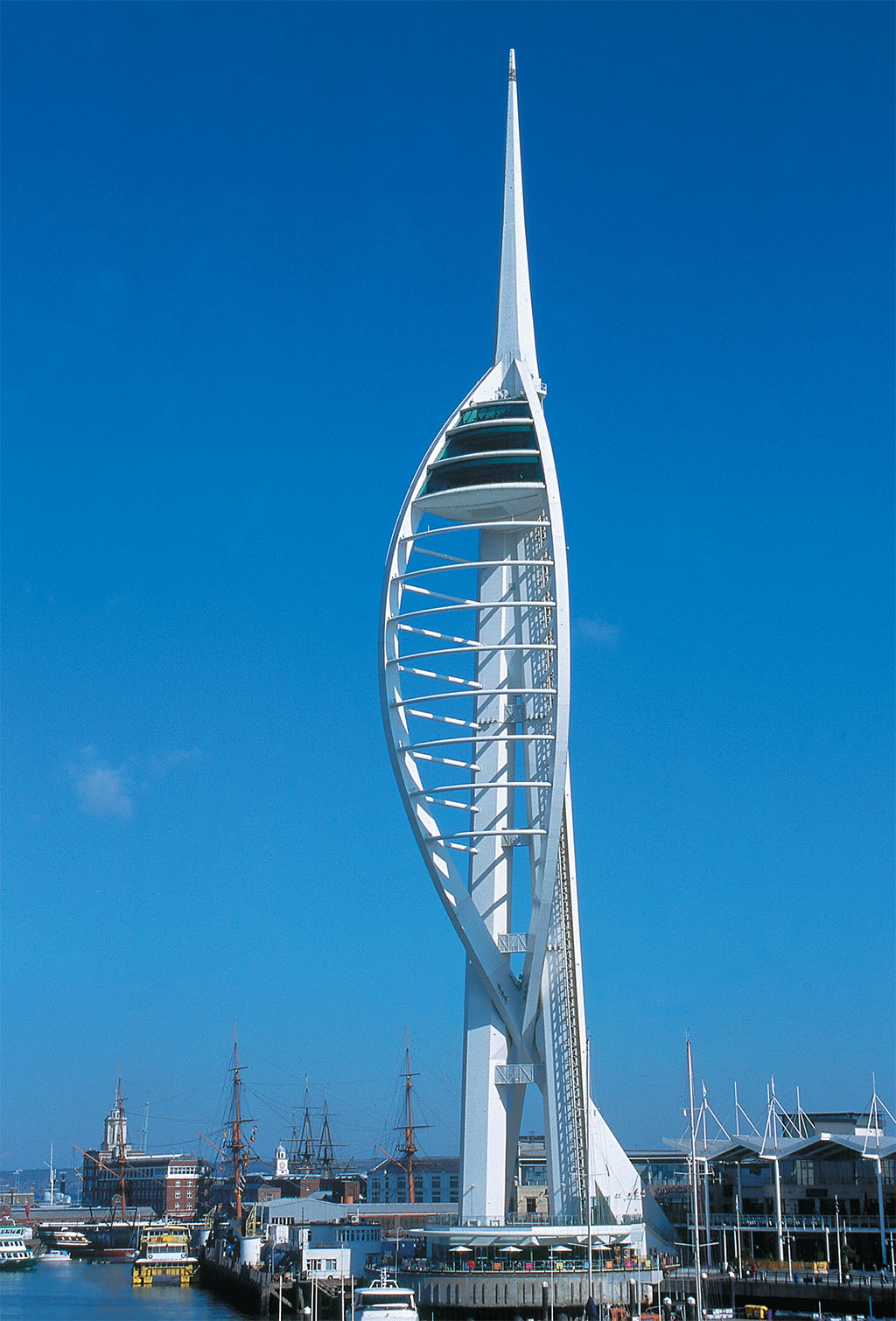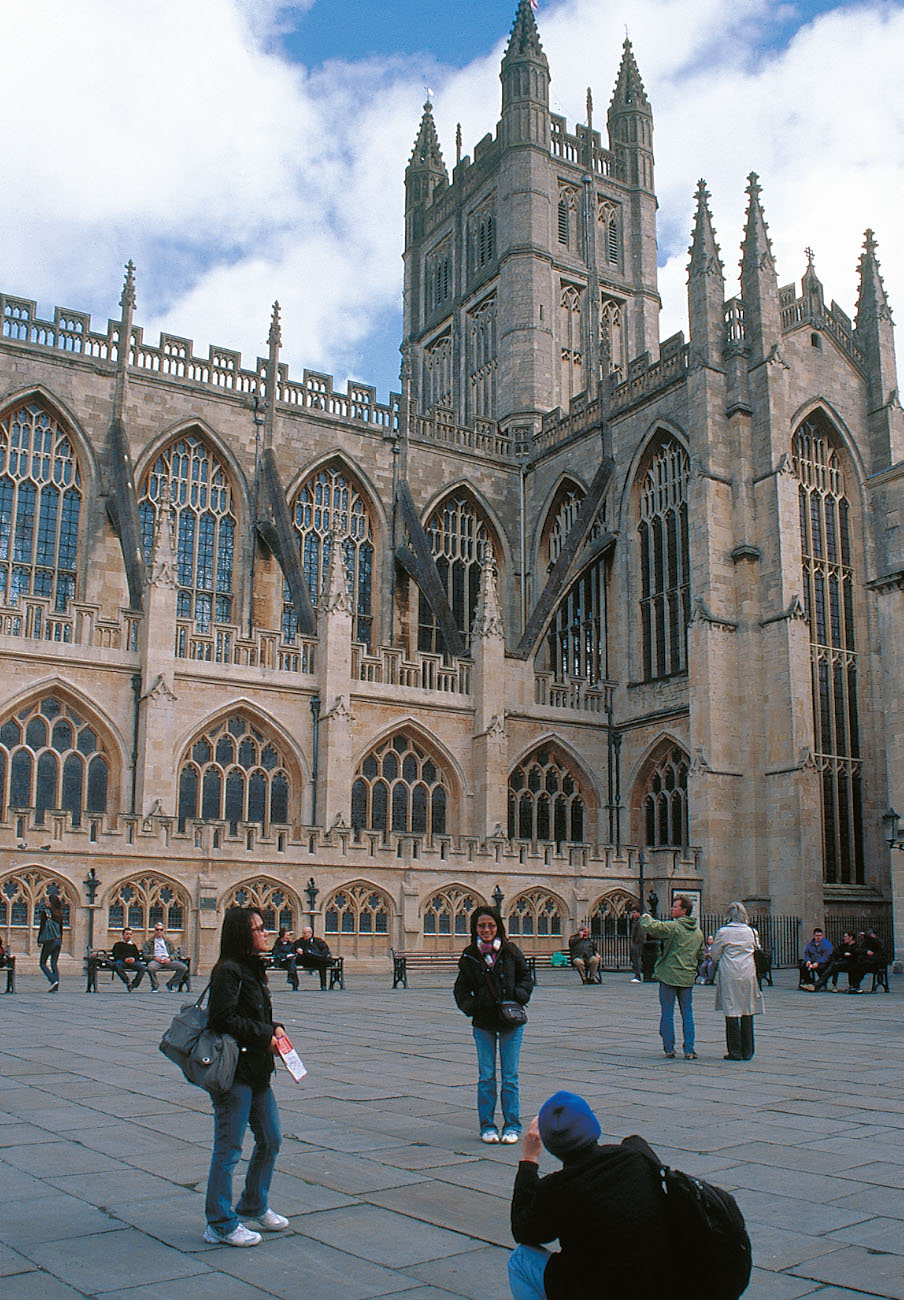
[caption id="SouthDownsSunshineandShowers_img1" align="aligncenter" width="261"]

THERE IS NEVER A BAD SEASON to travel in Britain. Over the years, there’s not been a month on the calendar that hasn’t seen me happily schlepping pillar to pub across the island. In general, though, I like to ramble across that great big National Museum of British History in what the airlines call “shoulder season.” And I do so a couple of times a year to find stories for British Heritage, visit with writers and invite our great readers along.
When I landed this spring, serendipitously avoiding the plagued Terminal 5, I set off toward the south coast. England was in the full green of April showers. As quickly as I could, I got off the M25 for quieter lanes through the Sussex countryside. Curling around Guildford I picked up the A283, which led up onto the pretty South Downs. I stopped to stretch and hunt for morning coffee in Petworth— in the shadows of magnificent Petworth House, with its incomparable art collection.
My first destination was the old castle town of Arundel, hanging on the rim of the South Downs. The story I was looking for comes a few pages on in this issue.
Britain may not be in the vibrant election mode we are, but politics still dominates the news. Gordon Brown’s Labour Government remains hugely unpopular. It certainly has not helped the beleaguered prime minister to be reminded constantly that he was not elected. As heir to Tony Blair in leadership of the party with control of Parliament, he virtually inherited his office. Last autumn’s aborted intention to take the country to the polls simply underlined his status. Reneging on the Labour pledge to take the European Union agreement to referendum further damaged him. “We’re getting used to being lied to” was a sentiment I heard more than once.
‘Britain might not be in the vibrant election mode we are, but inevitably politics still dominates the news’
From Arundel it was a short ride west along the coast past Chichester to the naval city of Portsmouth. I followed a well-signposted route from the A27 through the guts of the city center to the harbor and the Isle of Wight ferry terminal, set near the mammoth white stretch of the Spinnaker Tower. At 558 feet, the 2005 landmark is Britain’s tallest freestanding structure outside London—visible for miles across land and sea.
The crossing to the Isle of Wight takes about 50 minutes from Portsmouth to Fishbourne, across the channel called the Solent. Don’t think the Wightlink ferries are insignificant craft. The 5,400-ton St. Clare is a good-sized ship—with three decks devoted to cars, cargo and lorries of all descriptions. There are also three passenger decks, café, bar, bookstore and sundry passenger lounges.
Though I had visited IOW before, British Heritage has never reported on the popular southern island. And there is indeed a great story forthcoming. Besides, Wight has the long-standing reputation for receiving the most sunshine anywhere in Britain—no small recommendation itself for holiday travel.
I had a couple of days to find the story, but first I had to find a place to stay. After wandering the somewhat tatty waterfront at Sandown, the island’s original Victorian seaside resort, I turned south along the coast to the quieter town of Shanklin and put up at a guesthouse called The Braemar. Well, it wasn’t really quite that casual. I enlisted the help of amiable folk at the Tourist Information Centre to locate a place amenable to my pipe.
Smokers be forewarned. Since last July, nowhere in Britain is smoking permitted in enclosed public spaces. To be sure, many folks are breathing easier in pubs across the land. Their landlords are generally grumbling, though, about the loss of custom. Smoking is far more prevalent in Britain than in this country, and many of those who smoke are staying home more. Any pub or public gathering place with room has created a covered outdoor smoking area, often with electric or propane heaters in place.
The exception to the nonsmoking rule is hotels, which may still designate smoking rooms for guests. Many of them do not, advertising themselves as nonsmoking throughout. Those that do, find such rooms in high demand. I know, I know. I should quit anyway.
[caption id="SouthDownsSunshineandShowers_img2" align="aligncenter" width="1024"]

At 23 miles across and 13 miles deep, the Isle of Wight is big enough to be eclectic and fun, yet small enough to be discovered. Queen Victoria loved the place so much she spent most of the last 40 years of her life at Osborne House. Alas, plenty of other people love the island as well. With a year-round resident population of roughly 140,000, IOW is no rural backwater. Traffic along its northern and eastern shores exceeds the designed road capacity. Even out of the season, it feels crowded from Newport through Ryde and down the east coast to Shanklin. The solution is simple enough: Stay off those roads as much as possible.
[caption id="SouthDownsSunshineandShowers_img3" align="aligncenter" width="904"]

DANA HUNTLEY
WHEN IT CAME TIME to leave the island, I took the smaller Wightlink ferry from quieter Yarmouth across the narrow western reach of The Solent to Lymington, at the base of the New Forest. The uninitiated are always taken aback. After all, the New Forest was named such by William the Conqueror. Somehow it seems older in the Latin name he gave it, Nova Foresta. It has long been one of my favorite corners of England. I drove straight north across the middle of the 90,000-acre woods and moors, through the principal forest towns of Brockenhurst and Lyndhurst. I saw tiny herds of the wild New Forest ponies grazing on the new spring grass and woodland undergrowth.
My intention was to head for Winchester, which still seems like a great place for “A Day To Visit.” Between extremely high winds in The Solent and extra hoards of half-term visitors, though, the ferry was late and the skies were too gray for good pictures. So I soldiered on up through Salisbury and Warminster to Bath.
As I’m sure most of you know, Bath is certainly one place you can’t see in a day or three. Everyone else knows that, too. The magnificent small city is, after all, among the most popular British destinations for visitors—and justly so. When I planned my parents’ first expedition to Britain, about 25 years ago, Bath was one of the two English destinations outside London I had to put on their itinerary. If you have been, you can bear witness; there is no off-season for Bath. It’s always a crowded place.
I was last there a few years ago for Christmas. I had the glorious experience on Christmas Day of walking the precincts of the Abbey and the Roman Baths, Broad Street and Milsom Street, the Circus and the Royal Crescent with the cobbled streets dressed for the season, still and deserted.
BATH IS ONE DESTINATION in England that ranks on the short list of must-sees. Nowhere in Britain quite compares, both for its evocation of Roman Britain in the baths complex and for its stunning Palladian architecture and atmospheric embodiment of Georgian England. Though crowds might be inevitable, the town clearly conveys its glory. Somehow you can still see Jane Austen shopping on Milsom Street. And the range of museums is extraordinary in a compact, strollable town center. If we are looking for that elusive museum in situ, Bath is one of its most impressive galleries. We’ll revisit Bath for a day or more in a couple of issues.
But it was time to move on. I took the A46 north into the Cotswolds. I circled around Stroud and stopped to stretch in Painswick. Though the village itself is indistinguishable from three-score cute and quaint Cotswold villages, the churchyard has a unique feature. Its topiary yews have drawn the ohs and ahs of generations. By tradition and superstition, there are exactly 99 such sculpted trees. A hundredth has been planted. Bated breath awaits the question of its survival.
Circling Cheltenham and Gloucester, I turned west toward Ross-on-Wye. ’Tis a pretty enough town, though why Ross-on-Wye should have such a range of hostelries remains a mystery. As one local plaintively recalled, however, “people don’t seem to come here on holiday as much as they did in the old days.” Still, as its name indicates, the location of Ross on the lovely River Wye provides its answer. The Wye Valley deserves all the accolades it receives for scenic beauty. In fact, the term “picturesque” was coined here to describe it.
I PUT UP AT THE KING’S HEAD HOTEL right on the High Street. This is one of those great, funky two-star inns that too many Americans would rather sniff at. I love it: a big, clean room with old furniture and fittings that don’t exactly match. It’s a place with a history of 400 years and a front room bar of dark wood that’s popular with the locals. The food was terrific, and the welcome as well. One night in the bar I had a divine ragout of steak and local ale under short-crust pastry, with ratatouille and braised red cabbage.
‘In the market towns and smaller places, though, the old twostar inns and hotels often provide the best experience going’
Yes, we would always love to have those elegant three and four-star hotels and inns that are the finest places in the old downtown of British towns and cities. In London, Edinburgh and the like, I would not recommend two-star accommodation. In the market towns and smaller places, though, the old two-star inns and hotels often provide the best experience going. The plumbing may creak and the curtains might not match the bedspread. But it will be vetted and clean and historic. You want to meet the people, and not other overseas visitors and business travelers? These are the places to go.
I rendezvoused with regular British Heritage writer Siân Ellis for a day traipsing around the Forest of Dean. Siân is writing a story on the protected ancient woodland, and I went along on a soggy day to take pictures. It turns out that most of the woodland isn’t that ancient after all. One of the traditional occupations of folk in these parts was making charcoal. Guess where charcoal comes from?
I kept my eyes unsuccessfully peeled for another distinguishing feature of the forest—wild boar. After 350 years of extinction in the wild, the boar has made something of a comeback, nowhere more successfully, apparently, than the Forest of Dean. While they didn’t happen to show themselves, Siân said the farmer next to her down near Monmouth had spotted two of them in his farmyard.
It was time to turn toward London. The A40 took me straight east toward Oxford. But I veered south on the A415 through Abingdon and headed down to Reading. Between the congestion charge and the congestion, I’ve given up driving into town. It’s just too easy to drop off a car at the outskirts and take the train in. Besides, car rental places are almost always near the railway stations. From Reading it was a short ride in to Paddington Station.
It is always something of a shock arriving in the city from the green and pleasant English countryside. You get over it quickly, however, and get caught up in the city’s rhythms. For the first time I stayed up on Edgeware Road. Halal shops and restaurants are in abundance, and pubs scarce. Most of the accents weren’t English, and burkas were a common sight.
Sandra Lawrence joined me for dinner that evening and we batted around future story ideas and swapped gossip on politics, theater and sundry current events. With only the next day in town, I managed a revisit to the Tower of London and a chat with the Chief Yeoman Warder, then spent a couple of warm afternoon hours quaffing Old Speckled Hen with writer James Graham outside the Sherlock Holmes on Northumberland Place.
THAT LAST EVENING, I took the tube over to see the new St. Pancras International rail station. It is a marvelous reconstruction within the grand old Victorian shell. There’s a lovely statue in tribute to the late poet laureate John Betjeman, who began the campaign to save this brick temple to mechanical progress. Really, though, it was a bit underwhelming. With all the shops, eateries and kiosks, it’s still a train station. Besides, I couldn’t find a sign anywhere pointing to the men’s room.
I came back more convinced than ever that the planners of a new National Museum of British History have before them a dauntless and likely impossible task. You just can’t gather the centuries, the memories and the sites together in one place. They lie out there across the land like jewels in a finely crafted setting. I left them back in Ross-on-Wye at the King’s Head.





Comments